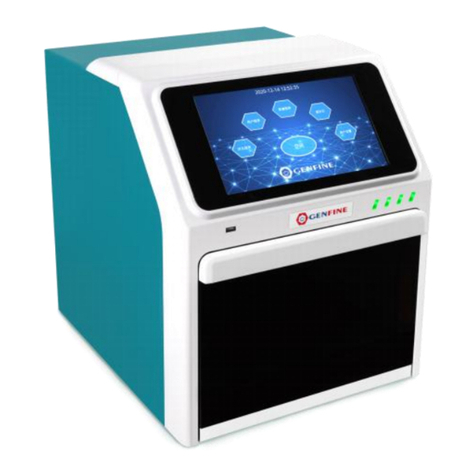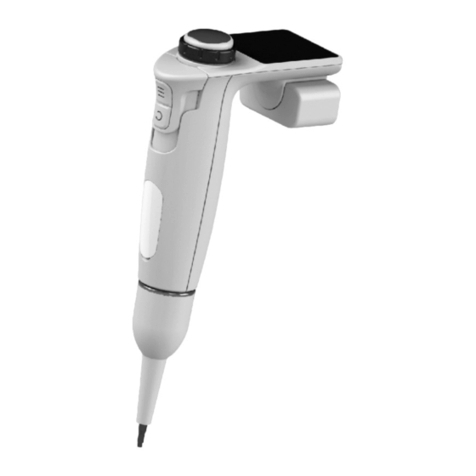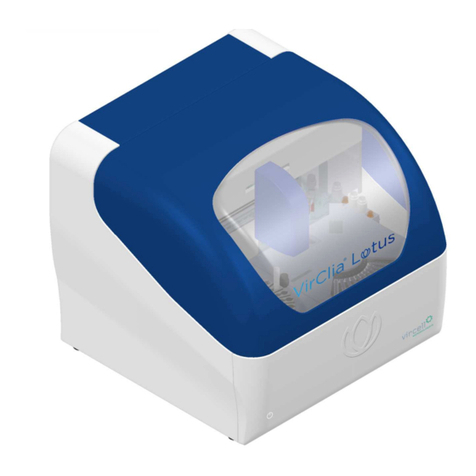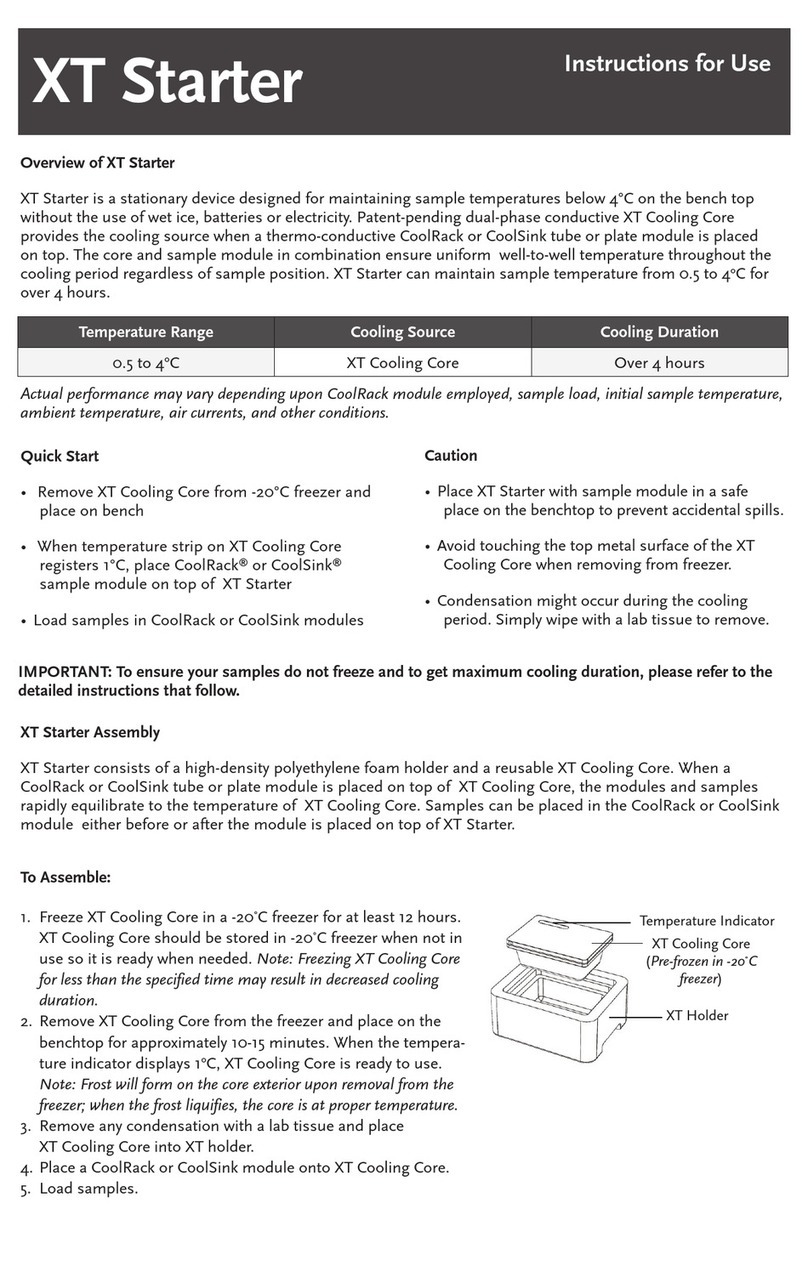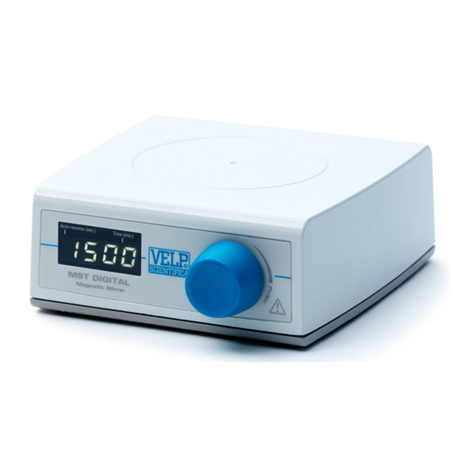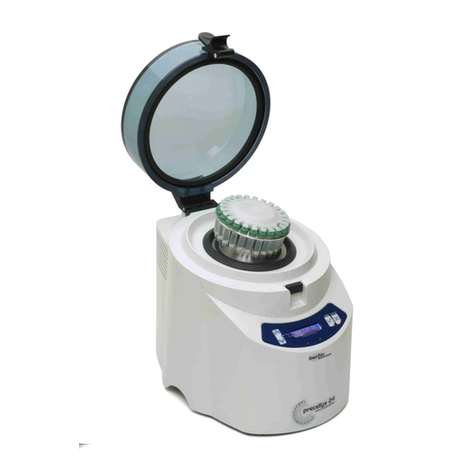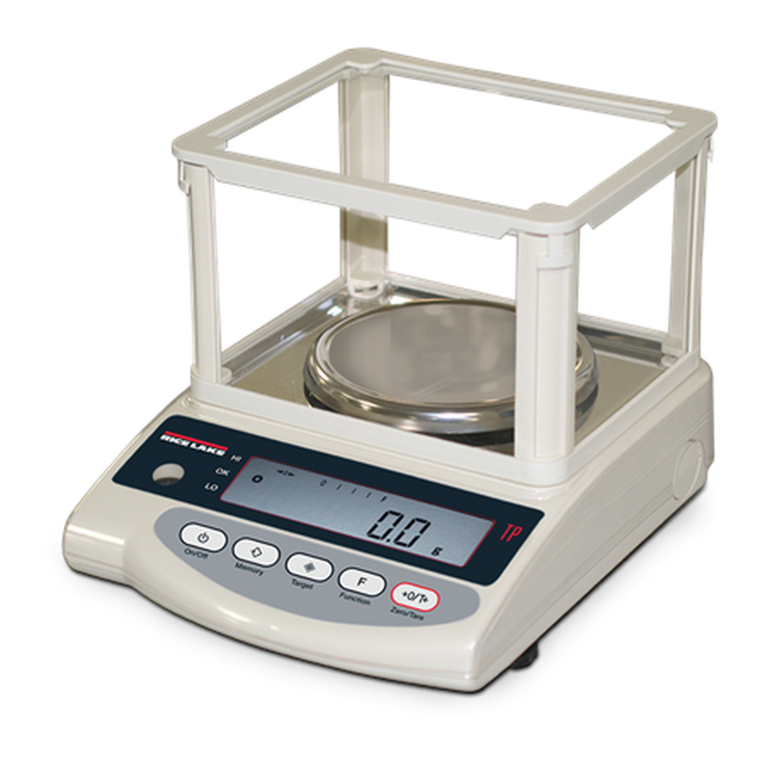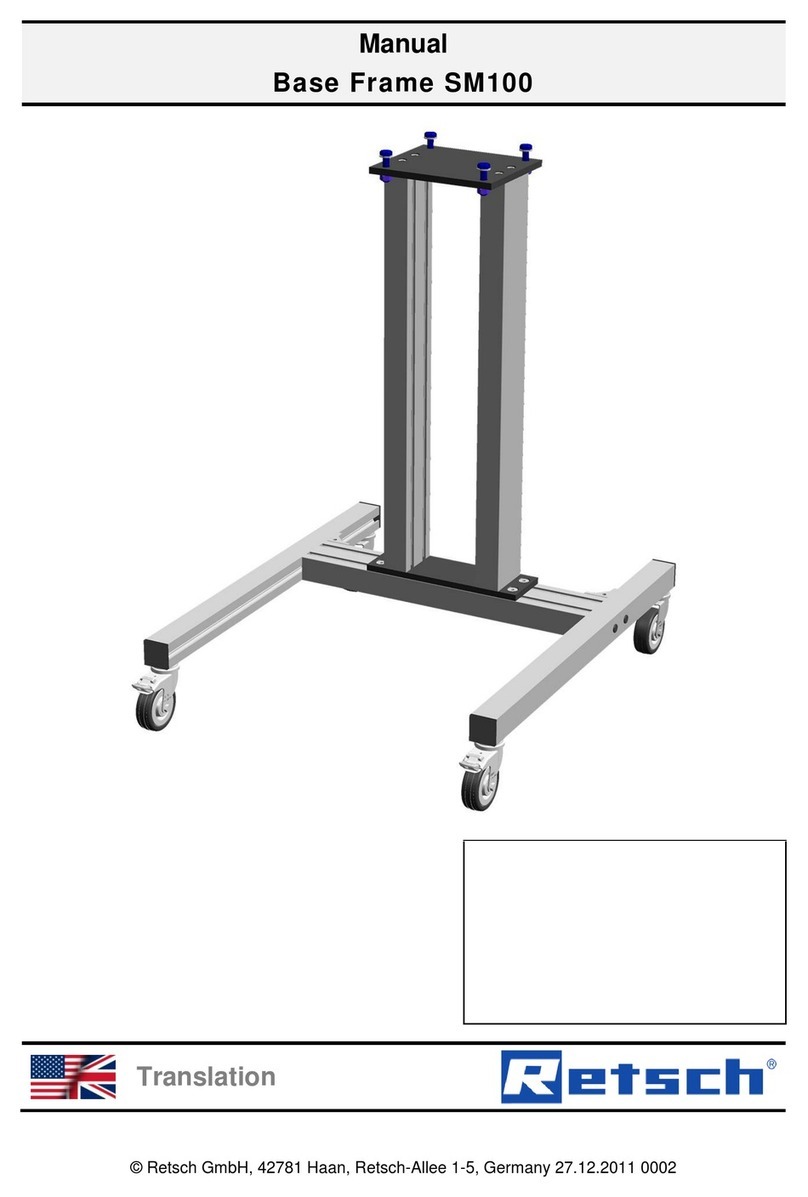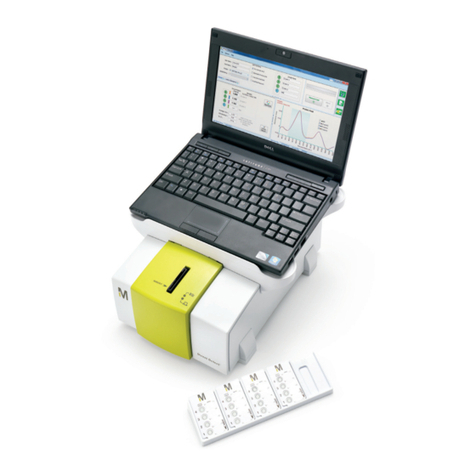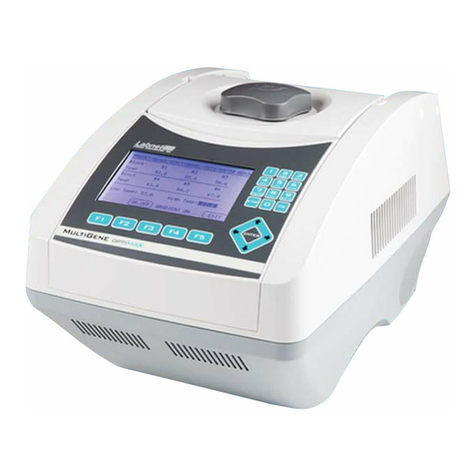Genfine Purifier HTS User manual

GENFINE
Purifier HTS
User manual V1.0
GENFINE BIOTECH (CHANGZHOU) CO., LTD.

Contents
Chapter 1 Product Introduction....................................................................................................... 1
1.1 Product Name.................................................................................................................... 1
1.2 Model.................................................................................................................................1
1.3 Intended Use..................................................................................................................... 1
Chapter 2 Function Introduction..................................................................................................... 2
2.1 Main Components..............................................................................................................2
2.2 Working Principle..............................................................................................................3
2.3 USB Port............................................................................................................................3
2.4 Consumables......................................................................................................................3
Chapter 3 Installation.......................................................................................................................5
3.1 Deliver Check................................................................................................................... 5
3.2 Environment Requirement................................................................................................5
3.3 Precautions.........................................................................................................................5
3.4 Installation Settings.......................................................................................................... 6
Chapter 4 Instructions for Use.........................................................................................................7
4.1 Starting...............................................................................................................................7
4.2 Programs............................................................................................................................ 7
4.3 Shutting Down...............................................................................................................12
4.4 Emergencies....................................................................................................................12
Chapter 5 Care and Maintenance.................................................................................................. 13
5.1 Instrument Maintenance..................................................................................................13
5.2 Cleaning.......................................................................................................................... 13
5.3 Magnetic Rods Cleaning..................................................................................................13
5.4 Waste disposal................................................................................................................ 13
5.5 Decontamination Procedure........................................................................................... 13
5.6 Packaging for repair.........................................................................................................14
5.7 Service Contract.............................................................................................................. 14
5.8 Fill in the system log.......................................................................................................14
5.9 Disposal of the instrument.............................................................................................. 15
Chapter 6 Technical Parameters....................................................................................................16
6.1 General Parameters..........................................................................................................16
6.2 Performance parameter....................................................................................................17
6.3 Safety parameters.............................................................................................................17
6.4 Compliance...................................................................................................................... 17
6.5 Error code....................................................................................................................... 18
Chapter 7 Other information..........................................................................................................19
7.1 Production Date............................................................................................................... 19
7.2 Service life.......................................................................................................................19
7.3 Components List..............................................................................................................19
7.4 Interpretation of Graphics................................................................................................19
7.5 Manual revision date....................................................................................................... 19
7.6 Target customers..............................................................................................................19
7.7 More information............................................................................................................20
7.8 Safety and User Guide.................................................................................................... 20

Chapter 8 Manufacturer and Medical Device Information........................................................... 21
Chapter 9 Order Information......................................................................................................... 22
Appendix A: Certificate of Decontamination.............................................................................. 23
Appendix B: System Log.............................................................................................................. 24

Page 1
Chapter 1 Product Introduction
1.1 Product Name
Automatic Nucleic Acid Extractor
1.2 Model
Purifier HTS
1.3 Intended Use
Purifier HTS
(Figure
1-1 )adopts the magnetic beads separation technology to achieve the
collection, release, transfer and incubation of the magnetic beads through the movement of the
magnetic rods and the magnetic tip combs. And by this, it can complete the entire nucleic acid
extraction process.
The instrument can be applied for the extraction and purification of nucleic acid from different
clinic samples. Purifier HTS is especially used on research and tests by the personnel who have been
trained professionally. It is used for automatic transfer and processing of magnetic beads in deep well
plates. It is recommended that good laboratory practice (GLP) should be followed to ensure the
reliability of the analysis. Refer to Chapter 6: Technical Parameters.
图1-1. Purifier HTS

Page 2
Chapter 2 Function Introduction
2.1 Main Components
2.1.1 Front View
Figure 2-1 Purifier HTS Front view
2.1.2 Rear View
Figure 2-2 Purifier HTS Rear View
2.1.3 Inside View
Figure 2-3 Purifier HTS Inside View

Page 3
Purifier HTS (Figure 2-3), The magnetic tip combs matches the deep-well Plate. The magnetic
head consists of two vertically moving platforms. One is used for the magnetic tip rodsand the other is
used for grasping the magnetic tip comb. During running, the magnetic tip comb and the magnetic rods
move vertically to complete the mixing of reagents and the adsorption and release of magnetic beads.
There are 4 plate positions on the rotary table. Up to 4 pieces of 96 deep well plates can be
placed simultaneously. Prior to the start of program, the samples and reagents are sub packed into the
deep well plate according to the extraction scheme. In each step, the deep well plate remains stationary,
and the moving component is the magnetic rod with magnetic rod tip comb.
The housing must be closed during operation. It can protect the sample from environmental
contaminants.
2.2 Working Principle
Purifier HTS automatic nucleic acid extractor adopts magnetic beads separation technology (Figure 2-
4). In this method, a disposable magnetic rod tip comb is loaded on the magnetic rod, and then the magnetic
beads are transferred between the deep hole plates containing specific reagents through the separation of the
magnetic rod and the magnetic rod tip comb, so as to realize the collection, release, transfer and incubation
of the magnetic beads. Different from the traditional nucleic acid extractor, Purifier HTS contains two
heating plates and two standard plates. Only four plates can complete the complete steps of nucleic acid
extraction by magnetic bead method, so as to realize the high-quality extraction of nucleic acid in the
sample, which greatly shortens the extraction time.
Figure 2-4. Diagram of working principle of the instrument
2.3 USB Port
There is a USB port on the front panel for importing and exporting programs.
2.4 Consumables
See "Accessory and Consumables List" for details and ordering information about Purifier HTS's
consumables, such as deep well plates, magnetic rod tip comb, and HEPA filters.

Page 4

Page 5
Chapter 3 Installation
3.1 Deliver Check
3.1.1 Unboxing
Move the packaged instrument to the operation site. To prevent condensation of water vapor, the
instrument should be left in its protective, anti-static plastic packaging until the ambient temperature is
reached room temperature. Open Purifier HTS and accessories carefully. Remove the instrument from
the package and place it on a horizontal surface.
Caution
Be careful not to touch or loosen screws or parts specially specified the in
the instruction manual. Otherwise, it may result in misplacement and
invalidate instrument warranty.
Warning
Purifier HTS weighs about 27 kg, if transporting without package, please
handle carefully. It is recommended that two people move the equipment
together and take appropriate precautions to avoid injury.
Please keep the original packing materials for future transportation. The packing is designed to
ensure safe transportation and reduce damage in transit. The use of alternative packaging materials
may not achieve the effect. All instrument related documentation and accessories provided by the
manufacturer are retained for future use.
3.1.2 Integrity check
Check the integrity of the goods. Please check the complete documents and accessories with the
instrument according to the packing list. Visually check the shipping packages, instruments and
accessories for possible transportation damage. If any parts are broken, please contact the
manufacturer in time.
3.2 Environment Requirement
When installing Purifier HTS, avoid placing it in the places where there is a lot of dust, vibration,
strong magnetic field, direct sunlight or ultraviolet radiation, airflow, high humidity or high
temperature fluctuation.
Please place the instrument on a regular experiment table to ensure that:
• The working area is flat, dry, clean and secure, with extra space for accessories, cables, etc;
• At least 10 cm of free space is provided for ventilation on the table around the instrument;
• The ambient air is clean, free from corrosive steam, smoke and dust;
• Ambient temperatures range from 5°C (41°F) to 40°C (104°F);
• Humidity is low and condensation does not occur (relative humidity is between 10% and 80%);
• Install the Purifier HTS in a protected place where no one can step on or trip over the power
cord, and where it is easy to access the power cord when the plug needs to be removed;
• Care should be taken not to operate the instrument in an environment with potentially harmful
liquids or gases.
3.3 Precautions
• Always ensure that the laboratory power supply voltage meets the specification on the label on
the back of the instrument;
• Do not smoke or eat or drink while using this device;
• Clean hands thoroughly after handling the buffer solution;
• Follow regular laboratory procedures for handling samples that may be dangerous;• Adhere to
good laboratory practices and wear appropriate protective clothing such as disposable gloves and
laboratory coat;
• Ensure that the working area is well ventilated;
• Do not spill liquid inside or outside the device.

Page 6
Caution Do not place the instrument near magnetic tapes, computer discs or other
magnetic storage devices, such as credit cards, as they may be damaged by
the strong magnetic field of the instrument magnetic head.
Warning Do not put the Purifier HTS magnetic head near the computer monitor,
as this may damage the monitor.
The product has a strong permanent magnet. This product should not be
used by people wearing pacemakers or metal prostheses. Prosthetic
devices such as pacemakers or prostheses may be affected or damaged by
close contact with strong magnetic fields.
3.4 Installation Settings
This section describes the installation Setting that must be performed prior to operating or
relocating the instrument.
3.4.1 Power Connection
Warning Make sure that the power switch on the rear panel is in the
"O" position. Never connect an ungrounded power outlet. Do not use any
power cord other than the one provided by the manufacturer.
First connect the power cord to the power connector and insert into the instrument. Next, connect
the power supply to a properly installed, well-grounded power outlet.
3.4.2 Operation Check
First turn on the instrument to "I". Instruments are initialized for testing and adjusting. The
display interface is the user management interface. It is recommended that have a check, which use the
maintenance program to verify proper instrument operation. If the check is correct, you can continue
to run on your own.

Page 7
Chapter 4 Instructions for Use
4.1 Starting
Before turning on Purifier HTS, make sure that the voltage on the label which is on the left
bottom of the back panel matches the local voltage.
Warning Never operate the instrument on an ungrounded electrical outlet.
4.2 Programs
4.2.1 Home Screen
The default program displays a list of programs that are preset in the Purifier HTS software and
cannot be edited or deleted. The user program is the program that the user edits and saves
themselves, and the user can edit and delete the user program according to the experiment needs. New
program can edit new programs. New programs can also be edited. Display the current status
of the instrument,“Idel” means the instrument is idle condition,“Run” indicates that the instrument
is running a program,“Check” indicates that the instrument is in the state of power-on self-test.
4.2.2 Program Running
Click "User Program" to enter the program classification interface.

Page 8
Users can select any file in the table, for example by clicking the "DNA" button to enter the list
of programs. Click the program you want to run, and click "Select" to enter the program details
interface.
The program detail interface displays the step number, board position number, item name, time,
volume, temperature and other parameters. After confirming that the program is correct, click "Run"
to run the program.
During the program running, the interface displays the total time and remaining time of the
program. Click "Pause" to pause the program.
Click “Continue” to resume running.

Page 9
Click "Cancel", a dialog box will indicate whether to exit the current running program or not.
Click "Cancel" to continue running, and click "Confirm" to stop running. Customers should use this
function with caution.
4.2.3 New Program Creation
Click "New Program" on the main interface to create a new programs according to the
customer’s requirements. Enter the program name and select the program type. Click or “Back”
to return to the main screen. Click "Next" to enter the program editing interface.
Click "Add" to add steps after, click "Insert" to add steps before the selected step, and click
"Delete" to delete steps. Click "Edit" to set step parameters. Click "Back" to return to the main screen.

Page 10
Parameters edition should be according to the actual situation to set the plate position, solution
volume and step options.
Note Purifier HTS only contains 4 plate positions, of which 1 and 4 are heating plate
positions. Generally, No. 1 The plate position corresponds to the combination step,
and the plate position 4 corresponds to the elution step. Please set the program steps
according to the plate position.
The machine has the liquid level identification function. Please fill in the liquid
volume accurately.
Click "next" to enter the parameter setting interface.
The heating temperature and time are selected according to the requirements of the experiment.
The temperature setting range is 0-99°C, and the temperature can be switched. The entry position of
the deep-well plate is the position where the magnetic tip comb enter the deep-well plates for mixing;
90% is recommended. High, medium and low vibration intensity are available. The magnetic
absorption position is the position where the magnetic rods enters the deep-well plate for magnetic
suction; 90% is recommended. There are two modes of magnetic absorption: one-step magnetic
absorption and step-by-step magnetic absorption. The chosen magnetic absorption time is a cycle time,
no less than 15 sec is recommended. Click "Done" when you're ready.

Page 11
After setting the program, click "Save", and the "Program Saved" dialog box appears; the
program will be saved in the folder corresponding to the user's program.
Click "run" to run the program, and a dialog box will pop up on the interface. Confirm again that
the reagent plate and magnetic rod sleeve have been placed in the correct position. Click "confirm" to
run the program, click "Cancel" to return to the program details, and click "pre heating switch" to turn
on and off the pre heating function.
4.2.4 User Settings
The user can select "User Setting" on the main screen to set the parameters of Purifier HTS.
After entering the user setting interface, the user can set the language, fan switch, light switch and
prompt tone switch. There are two modes of language: Chinese and English. "Factory Setting" is not
accessible to the users. if necessary, please to contact the manufacturer.

Page 12
4.2.5 UV Light Settings
Click "UV Sterilization" on the main interface to set UV disinfection, and set the time in the
time setting column. The remaining time is displayed as the time countdown. Click "Start" to start
UV disinfection. Click "Close" to stop UV disinfection.
4.3 Shutting Down
Turn off Purifier HTS:
(1) Press the power switch on the rear panel of the instrument to the OFF position to turn off
Purifier HTS. It is recommended to turn off the instrument at night and on weekends.
(2) Wipe the surface of the instrument with a soft cloth or paper towel with distilled water, mild
detergent (SDS, sodium lauryl sulfate) or soap solution.
(3) If contaminated reagents have been spilled on the workbench, please clean them with 75%
ethanol or other disinfectants (see page 12 "Decontamination Procedure").
Warning Remove the deep-well plate and magnetic tip comb that are used in the
instrument. Dispose of all deep-well plates and magnetic tip comb as
biohazard waste.
4.4 Emergencies
If an abnormal situation occurs during operation, such as liquid spilling into the instrument,
please follow the steps below:
(1) Turn off the instrument immediately.
(2) Unplug the power plug.
(3) Implement appropriate corrective measures. But do not disassemble the instrument.
(4) If the corrective measures taken do not help, please contact authorized technical service or
your local agent.

Page 13
Chapter 5 Care and Maintenance
5.1 Instrument Maintenance
In order to ensure the reliability of daily operations, please clean up the dust in time to prevent
liquid leakage. Do not use abrasive cleaners, as they may damage the paint surface.
It is recommended that you clean the surface of the instrument regularly to maintain its good
appearance. Wipe with a soft cloth dampened with warm water and neutral detergent. If necessary,
clean the outer surface of the instrument and the turntable with clean low-pressure compressed air, or a
cloth dampened with water or a mild detergent.
Although Purifier HTS is made of high-quality materials, you must remove the spilled salt
solution, chemical solvent, acid or alkaline solution from the surface immediately to prevent damage
to the instrument.
Caution The painted surface can be cleaned with most laboratory cleaners. Do not
expose the surface to concentrated acid or ethanol for a long time to avoid
damage. The display, plastic housing and surface can be cleaned with mild
laboratory cleaners or alcohol.
Waning If any surface is contaminated with biologically hazardous materials, it
should be cleaned immediately with a mild disinfectant solution. Do not
autoclave any part of the instrument.
5.2 Cleaning
Keep the surface of the platform clean to prevent dust and dirt from entering the instrument. At
least once a week, clean the surface of the turntable with a soft cloth or paper towel dampened with
ethanol, mild detergent (SDS, sodium lauryl sulfate) or soap solution. If contaminated reagent is
spilled out on the turntable, clean it with a cloth dampened with ethanol or mild detergent.
5.3 Magnetic Rods Cleaning
If necessary, soak the magnetic rods in alcohol, mild detergent (SDS) or soap solution, and then
wipe the magnetic rods finally.
5.4 Waste disposal
Follow the specific regulations of laboratories and the country for handling biological waste. For
the disposal of contaminants, please refer to the relevant local regulations.
Warning The sample may be potentially contaminated. Dispose of disposable deep-
well plates, parafilm, magnetic tip comb, disposable gloves, syringes, and
disposable pipette tips as biohazardous waste.
5.5 Decontamination Procedure
If you have spilled out contaminant reagents, please perform a decontamination procedure.
Warning The decontamination procedure should be carried out by authorized trained
personnel in a well-ventilated room, wearing disposable gloves,
protective glasses and clothing.
Follow regular laboratory procedures for decontamination. The decontamination instructions
provided with the reagents used should be followed. It is strongly recommended to perform a
complete decontamination procedure before transferring the instrument from one laboratory to another,
or before sending it to a repair service department.

Page 14
5.5.1 Decontamination Reagent Types
75% ethanol
1%-3% VirkonTM solution
4% glutaraldehyde solution
Chloramine T
Microcde SQTM 1:64
4% DeconTM 90min
5.5.2 Decontamination Procedure
a) Wear disposable gloves to protect yourself.
b) Prepare the cleaning agent: 200ml 4% glutaraldehyde solution (or other reagents
recommended by the security officer).
c) Empty the turntable.
d) Turn off the power switch and disconnect the power cord.
e) Use a cloth moistened with 75% ethanol to disinfect the outside of the instrument.
f) Put the instrument in a big plastic bag. Make sure the front housing is open.
g) Put a piece of cloth soaked in glutaraldehyde solution in the plastic bag. Make sure that the
cloth does not touch the instrument.
h) Seal the instrument in a plastic bag for at least 24 hours.
i) Take the instrument out of the plastic bag.
j) Clean the instrument with mild detergent.
k) Use 75% ethanol to remove stains.
l) After performing the decontamination procedure, attach a signed and dated decontamination
certificate on the transport package and attach it to the outside of the package (see Appendix A:
"Certificate of Decontamination").
5.6 Packaging for repair
If you need repair the instrument, please package it following the guidelines below.
Caution Before removing the instrument from the laboratory or performing any repair
on it, it must be thoroughly cleaned.
When sending the instrument for repair, please remember:
·Inform the reason for repair.
·Decontaminate the instrument before hand.
·Pack the instrument according to its state before disassembly.
·Use the original packaging to ensure that the instrument will not be damaged during
transportation. Any damage will incur additional service charges.
·Return the instrument (or other items) with a signed and dated decontamination certificate (see
Appendix A: "Certificate of Decontamination"). And attach it to the outside of the package.
·After you contact the local agent or the manufacturer's technical service department, please
specify the disfunction.
·Please refer to page 15 for more information on storage and transportation temperatures.
5.7 Service Contract
It is recommended that a service engineer trained by the manufacturer conduct a regular
maintenance and repair of the instrument every 12 months. This ensures that the product is properly
maintained and used without any problems.
5.8 Fill in the system log
System logs, including operation summary, maintenance procedures, error messages and other
useful information about system. These is very useful for proper maintenance of the system. Please
refer to Appendix B: "System Log". You can copy the form as many times as you need, but keep the
original blank form in the user manual.

Page 15
5.9 Disposal of the instrument
If Purifier HTS must be discarded, please follow the specific regulations of the laboratory and the
country for the treatment of biological waste. The disposal of the instrument is carried out in
accordance with the laws and regulations of the local authorities on the recycle of electronic
equipment and waste. Disposal procedures vary from country to country. For the original packaging
and packaging materials recycle, please cooperate with a recycler you are familiar with.
Warning Disinfect the instrument before disposing of it. Please refer to
decontamination Procedures on page 12.

Page 16
Chapter 6 Technical Parameters
6.1 General Parameters
As part of our continuous product development plan, the manufacturer reserves the right to
change any parameters without prior notice.
General parameter
Size
Device
(510mm x 430mm x 470 mm)±10mm
Weiget
Device
about 27kg[±0.5kg]
Operating temperature range
+ 5°C to + 40°C
Operating humidity range
The maximum relative humidity is 80% when the
temperature is lower than 31℃, and the humidity
drops lineary to 50% at 40℃.
Transport condition
-40°C to +70°C,packed by transport package
Storage condition
-25°C to +50°C,packed by transport package
Main Power
100-240 Vac, 50/60 Hz
Power consumption
Maximum 96 VA
Heat dissipation
Maximum 328 BTU
Internal memory
about 500 files
File input
Use a computer or USB storage
Computer interface
RS232
General application
Run 10 times per day, run 250 days a year; 40 minutes of
files use medium running speed; room temperature

Page 17
6.2 Performance parameter
Performance parameter
Processing volume
20-1000ul
Processing time
10min
Capacity
1-96
Collection efficiency of
magnetic beads
≥98%
Magnetic bead size
Average diameter>1um
Magnetic rod
96 Magnetic rod
Module station
4
Deep-well Plate type
(disposable)
Micro 96 deep-well plate
Magnetic rod tip comb
(disposable)
Four 96 deep-well plates with one comb
Heating temperature
Accuracy of heating module
from +10°C to 105°C
±2℃
Display
10"LCD, 1024×600 pixel color display
6.3 Safety parameters
6.4 Compliance
Purifier HTS meets the following compliance:
YY 0505-2005/IEC 60601-1-2:2001
GB 4793.1-2007/IEC 61010-2:2001
The safety parameters include the following environmental conditions, which must not exceed the
regulations stated in the operating conditions
Altitude
maximum 2000m
Temperature
+5°C to 40°C
Humidity
The maximum relative humidity is 80% when the temperature is
lower than 31℃,and the humidity drops linearly to 50% at 40℃
AC power fluctuation
Not more than ±10% of the marked voltage
This manual suits for next models
3
Table of contents
Other Genfine Laboratory Equipment manuals
Popular Laboratory Equipment manuals by other brands
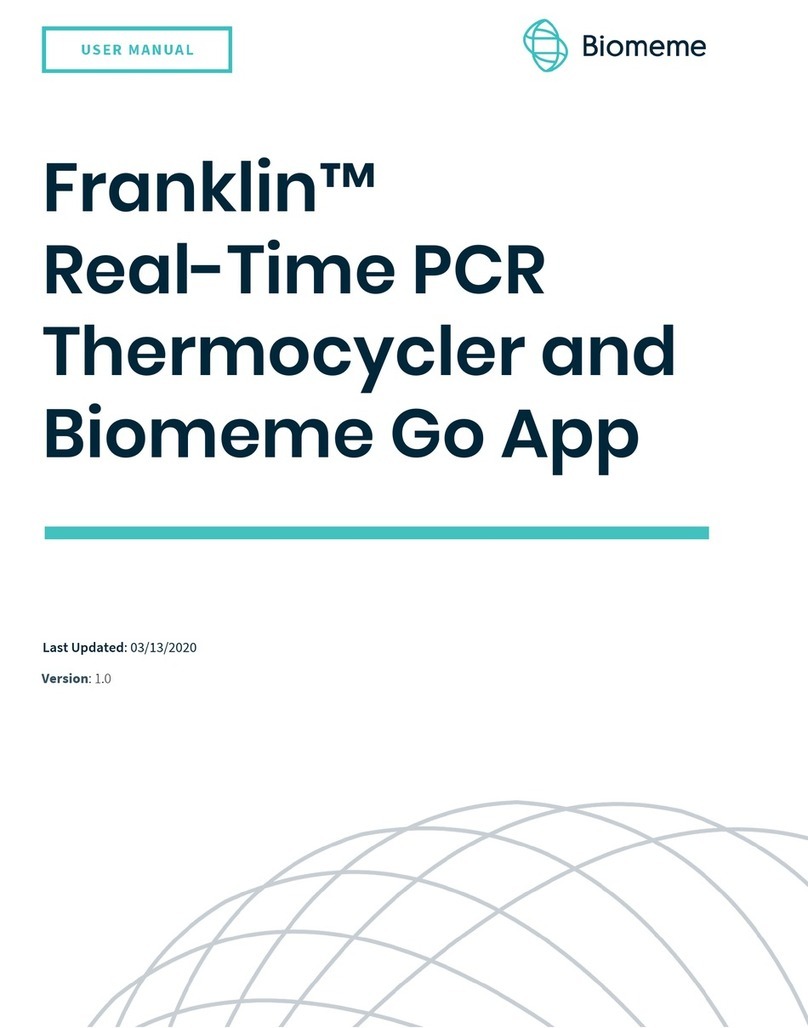
Biomeme
Biomeme Franklin user manual
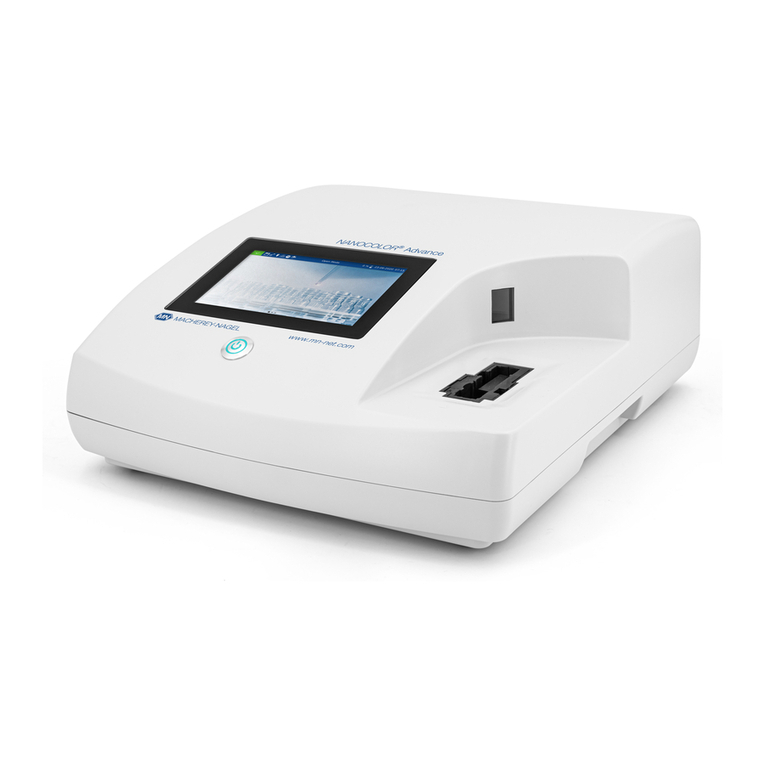
Macherey-Nagel
Macherey-Nagel NANOCOLOR Advance quick start guide
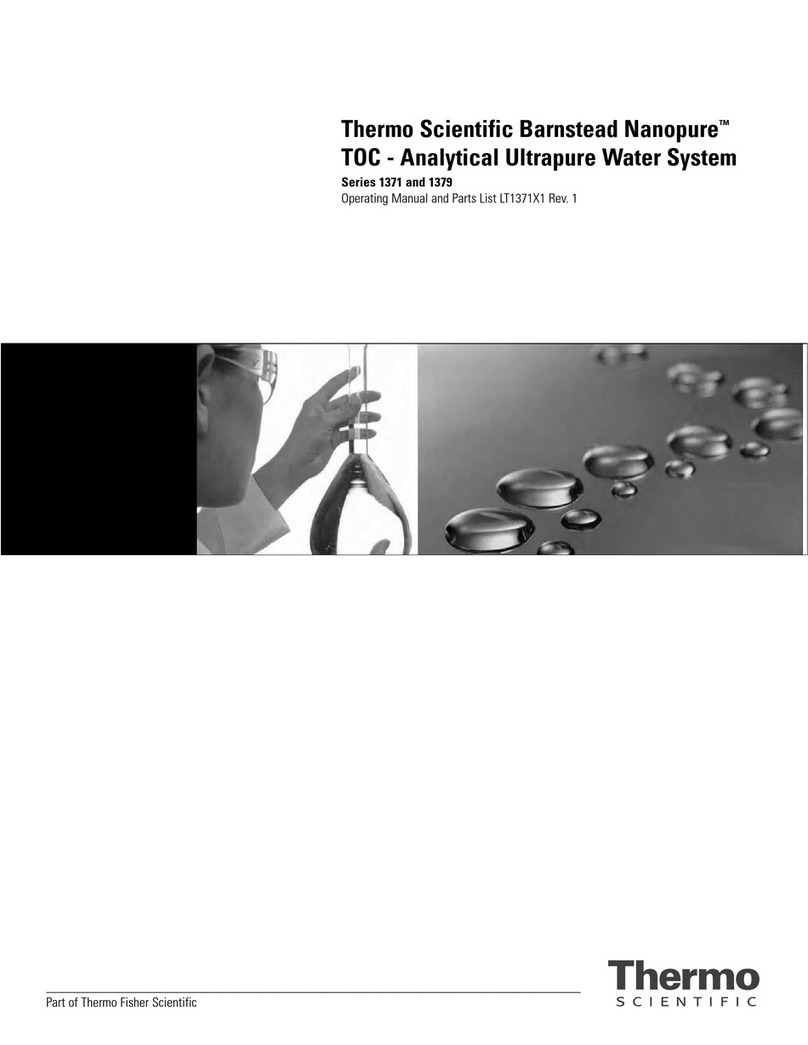
Thermo Scientific
Thermo Scientific 1371 Operating manual and parts list
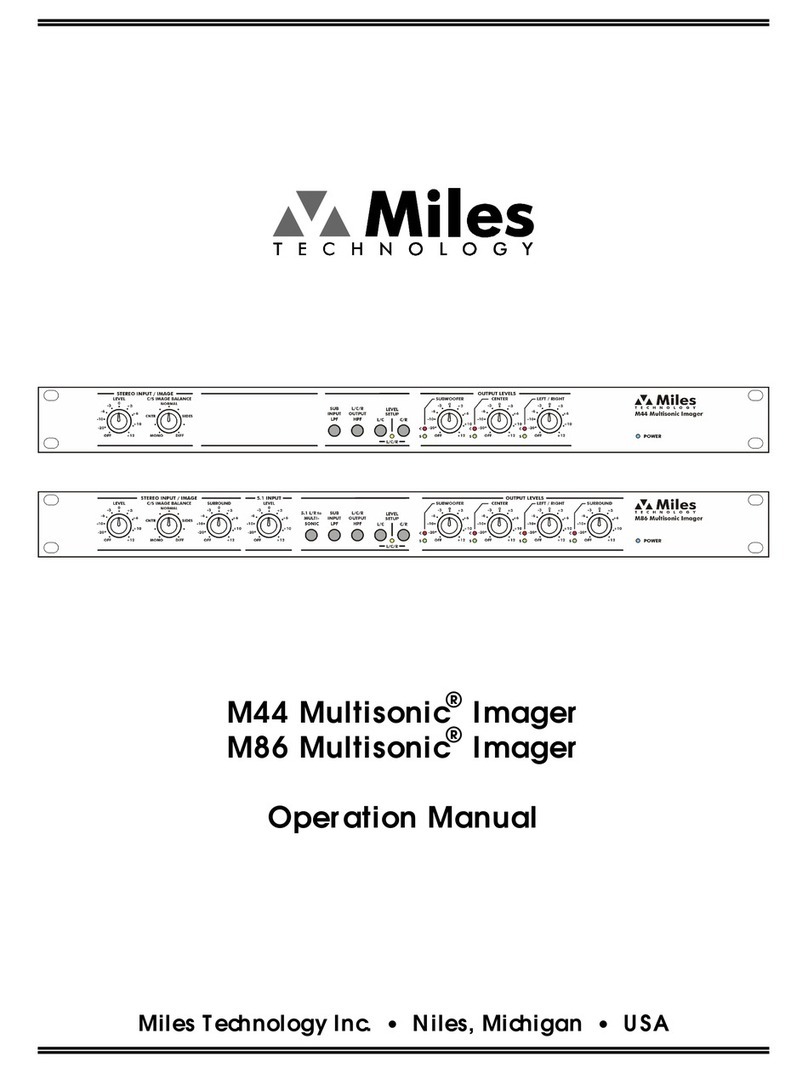
Miles Technology
Miles Technology Multisonic M44 Operation manual
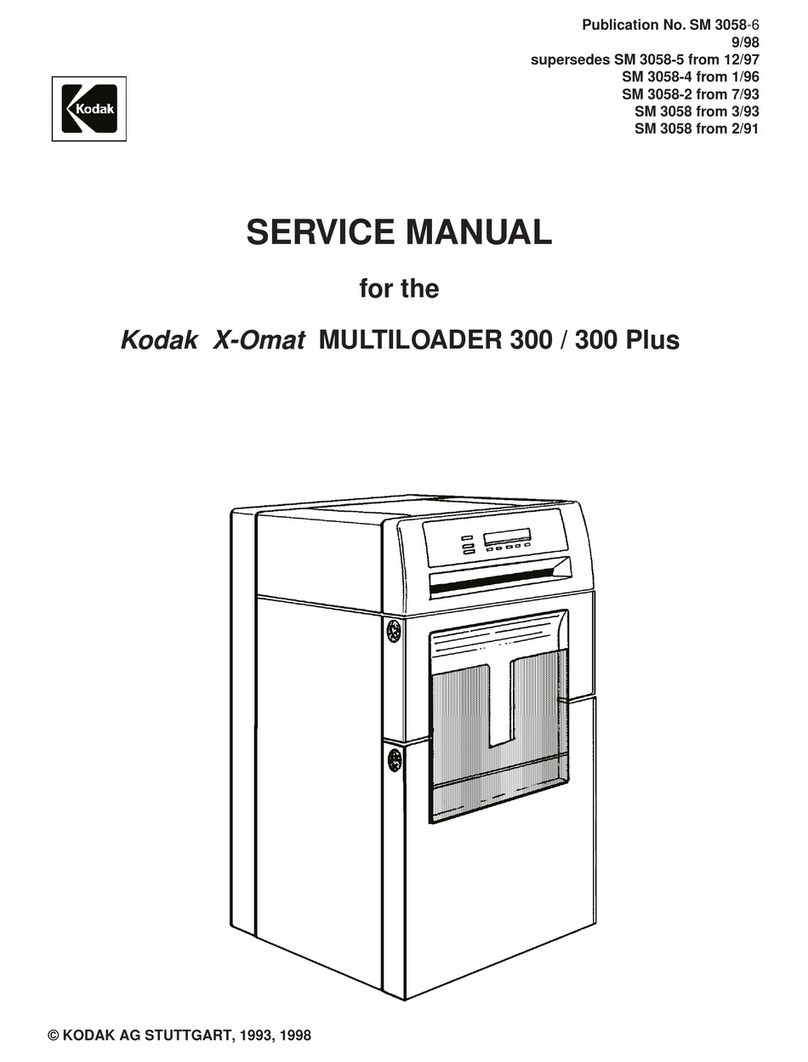
Kodak
Kodak X-Omat MULTILOADER 300 Plus Service manual
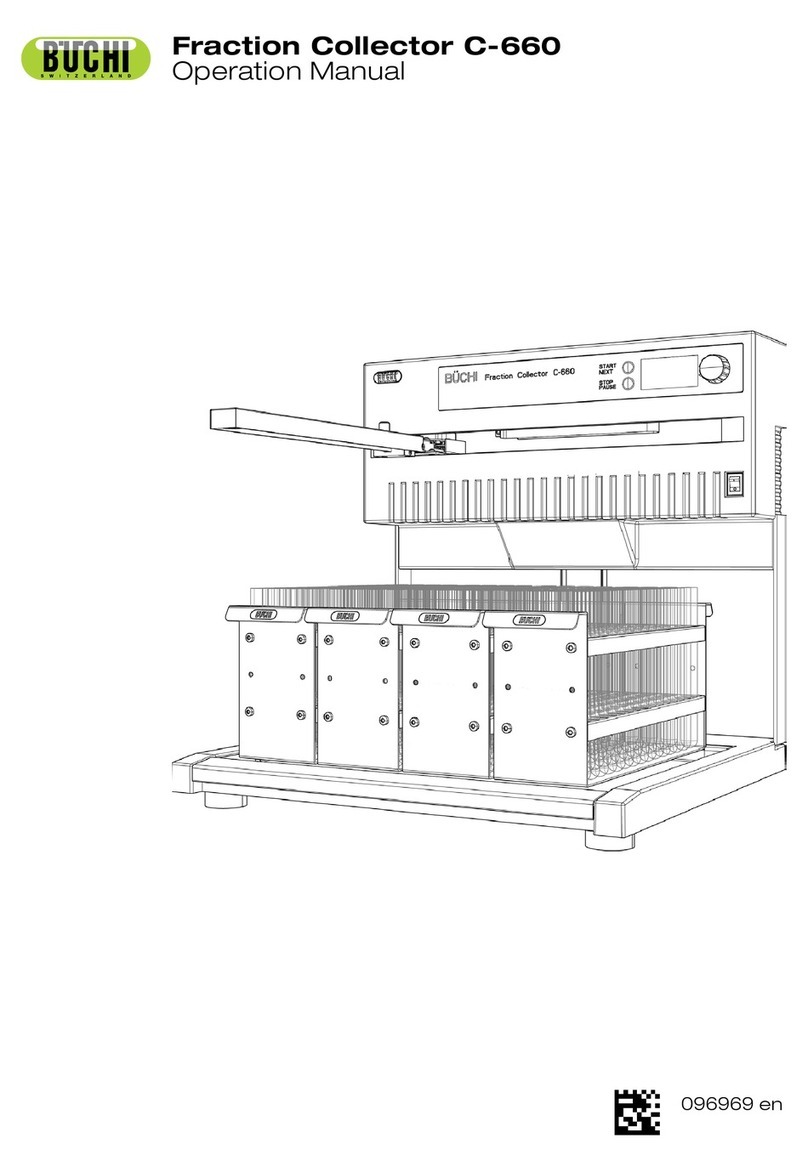
Buchi
Buchi C-660 Operation manual
